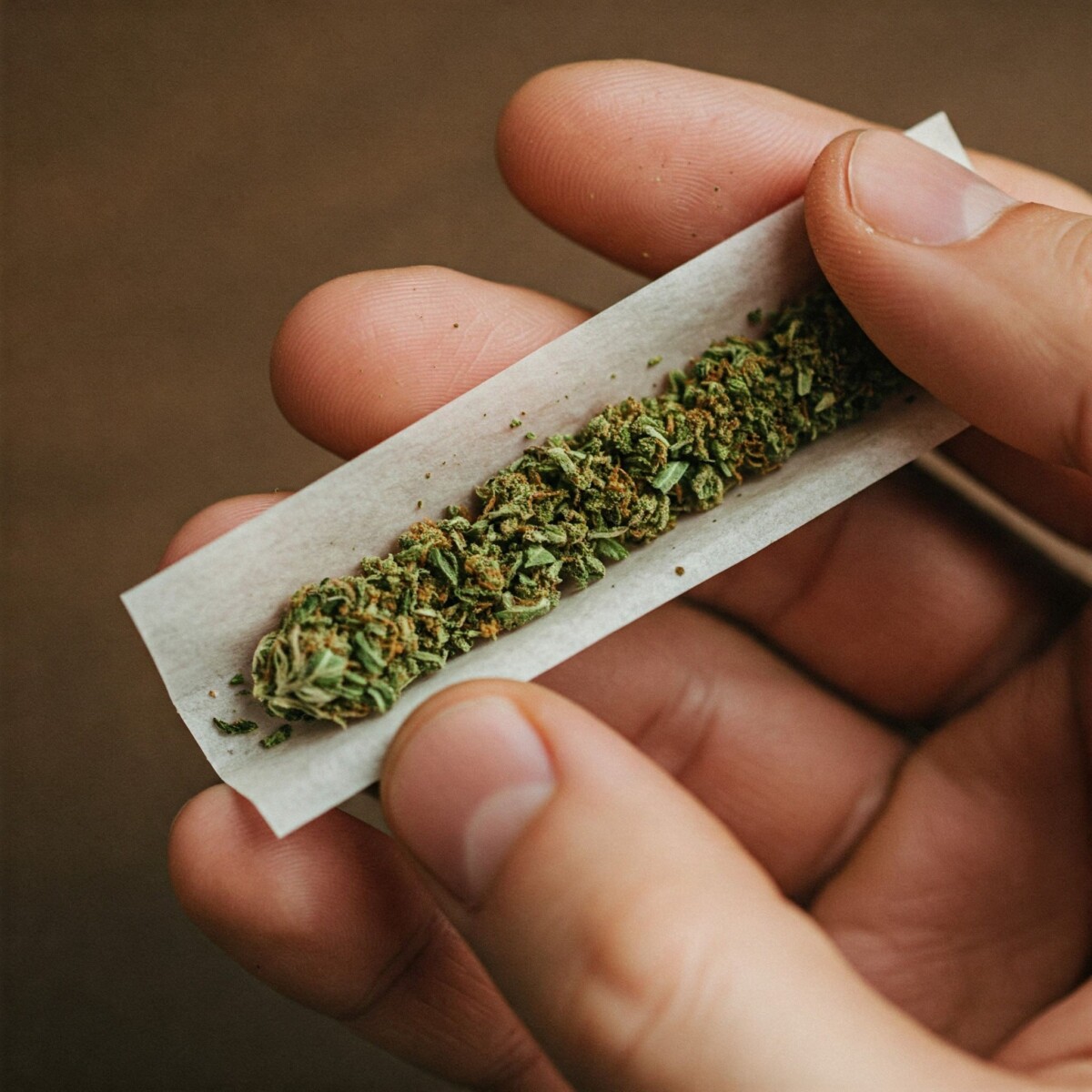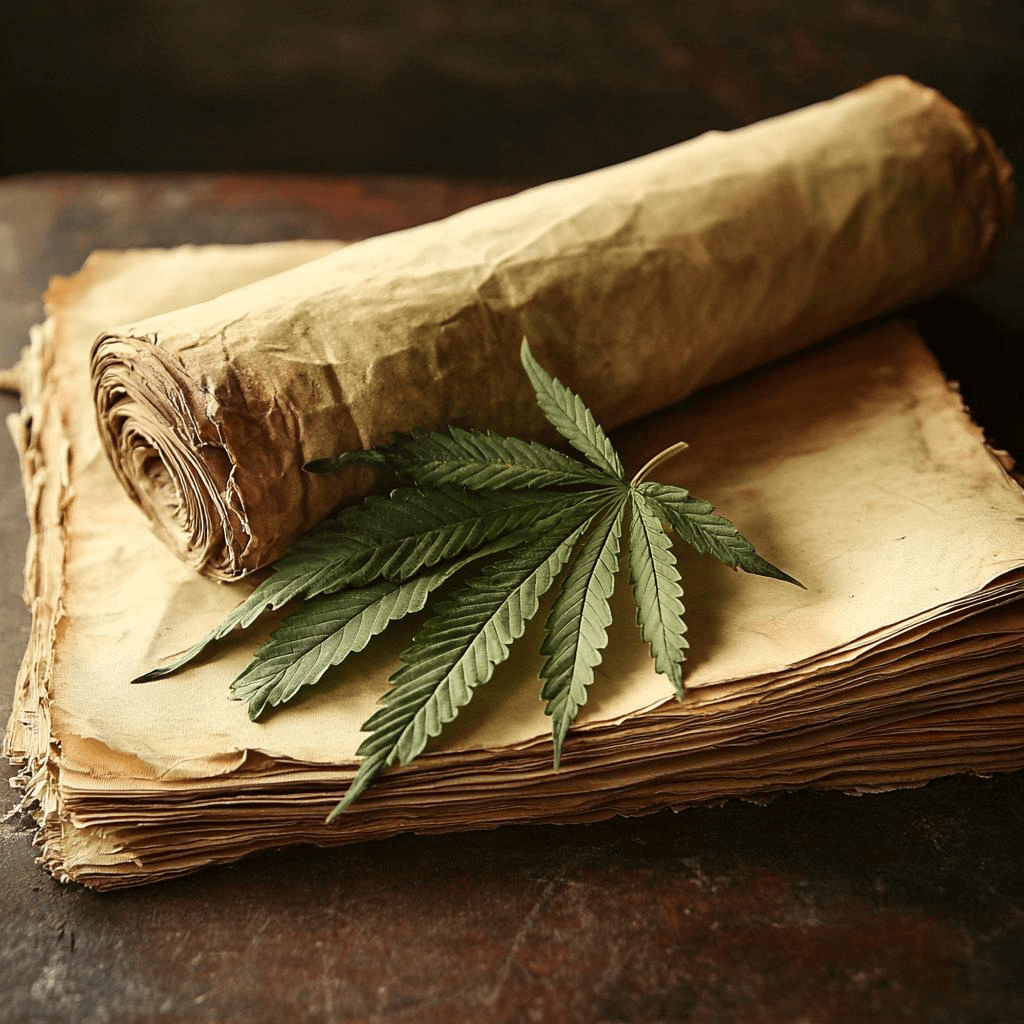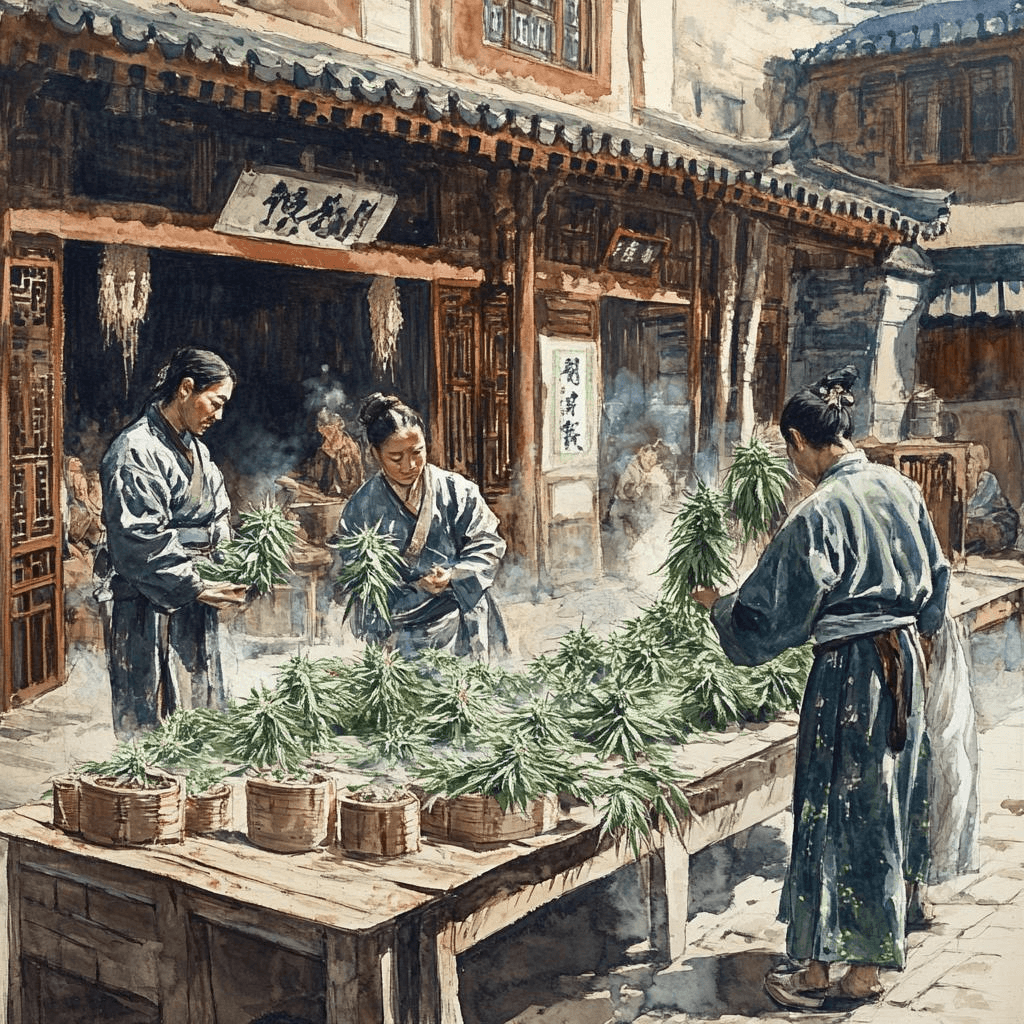The fashion world, while a vibrant hub of creativity, is facing increasing scrutiny for its environmental impact. From resource-intensive cotton farming to the persistent pollution of synthetic fabrics, the industry is ripe for a sustainable transformation. Enter hemp, an ancient crop experiencing a modern-day renaissance, poised to weave a greener future for our wardrobes.
For centuries, hemp has served humanity in countless ways, from sturdy ropes to nutritious seeds. Now, its remarkable properties are being rediscovered by the fashion industry as a compelling alternative to conventional materials. This blog post will explore the compelling benefits of integrating hemp into the fashion landscape, highlighting its environmental advantages, impressive material qualities, and the exciting potential it holds for a more sustainable future.
Earth-Friendly Fashion: Hemp’s Environmental Edge
In the urgent pursuit of eco-conscious fashion, the environmental footprint of raw materials takes center stage. Here, hemp emerges as a clear winner, offering significant advantages over resource-heavy conventional fibers.
1. Water Wise: Less Thirsty Than Cotton
Conventional cotton is notorious for its high water consumption. Producing just one kilogram of cotton can require upwards of 10,000 liters of water, placing immense strain on global water resources. Hemp, conversely, is a remarkably water-efficient crop. Many sources indicate it needs significantly less water, often relying primarily on rainfall. Some studies suggest it requires as little as a quarter of the water needed for cotton production. This dramatic reduction in hemp water usage makes it a far more sustainable choice when considering hemp vs cotton water consumption and contributes to the broader category of sustainable fabrics water efficiency and low water footprint fabrics.
2. Pesticide-Free Potential: Nurturing Healthy Ecosystems
Conventional cotton farming is a major consumer of pesticides and herbicides, accounting for a significant percentage of global pesticide use on a relatively small amount of agricultural land. These chemicals can contaminate soil and water, harm biodiversity, and pose health risks. Hemp pesticide free cultivation is a significant advantage. Hemp exhibits natural resistance to many pests and diseases. Its rapid growth also helps it to outcompete weeds, often eliminating the need for herbicides. This significantly reduces the chemical burden on the environment, promoting healthier ecosystems and safer working conditions. Opting for organic hemp clothing further amplifies these benefits and aligns with the principles of sustainable farming hemp. Hemp stands out as one of the natural pest resistant fibers.
3. Land Efficiency: Maximizing Output, Minimizing Footprint
The demand for clothing necessitates vast tracts of land for cultivation. Hemp is a highly productive crop, yielding significantly more fiber per acre compared to cotton. Reports suggest hemp yield per acre is significantly higher. Hemp can produce 250% more fiber than cotton and 600% more fiber than flax on the same land area. This higher yield means less land is required to produce the same amount of fabric, making it a land efficient fabrics choice and reducing pressure on land use when comparing hemp vs cotton land use. Hemp is a prime example of high yield sustainable crops.
4. Carbon Sequestration: A Breath of Fresh Air for the Planet
In the fight against climate change, a crop’s ability to absorb carbon dioxide (CO2) from the atmosphere is crucial. Hemp is a hemp carbon footprint reducer, acting as a carbon sequestration fabrics. It’s a sustainable materials climate change solution as it’s a carbon-negative crop, meaning it absorbs more CO2 during its growth cycle than it emits. For every ton of hemp produced, it’s estimated that 1.63 tons of CO2 are removed from the atmosphere, making it an eco friendly fabrics CO2 absorber.
5. Soil Health Benefits: A Regenerative Resource
Unlike some crops that deplete soil nutrients, hemp can actually improve hemp soil health. Its deep root system helps to aerate the soil, prevent erosion, and can even break up compacted soil. As the plant matter decomposes, it returns valuable nutrients, making it a key component of regenerative agriculture hemp practices and a beneficial aspect of hemp crop rotation benefits, contributing to soil improving fabrics.
6. Biodegradability and Recyclability: Closing the Loop on Waste
At the end of its life cycle, hemp biodegradability is a significant advantage. Hemp fabric will naturally decompose without leaving harmful residues, unlike synthetic fabrics. Furthermore, recyclable fabrics hemp options are emerging, promoting a sustainable fashion circular economy and reducing eco friendly fabric waste.
Material Advantages: Strength, Softness, and Versatility
Beyond its environmental merits, hemp boasts impressive material properties that make it highly suitable for the fashion industry.
1. Durability and Longevity: Built to Last
Hemp fibers are exceptionally strong, contributing to hemp fabric durability and making it one of the strong natural fibers. This translates to long lasting hemp clothing. Hemp fabric is less likely to degrade over time and can withstand repeated washing, making it a durable eco friendly fabrics choice. Interestingly, hemp often becomes softer with each wash.
2. Softness and Comfort: A Gentle Touch Against the Skin
While raw hemp can feel somewhat coarse, advancements in processing have significantly improved hemp fabric softness. Modern methods can produce comfortable hemp clothing. Hemp blends for softness with other sustainable fibers like organic cotton enhance this quality.
3. Breathability and Moisture Wicking: Keeping You Cool and Dry
Hemp fibers are naturally breathable, contributing to hemp fabric breathability. They also possess excellent moisture wicking hemp properties, making it ideal for comfortable summer fabrics and a breathable eco friendly clothing option.
The Green Thread: Unveiling the Benefits of Hemp in the Fashion Industry
The fashion world, while a vibrant hub of creativity, is facing increasing scrutiny for its environmental impact. From resource-intensive cotton farming to the persistent pollution of synthetic fabrics, the industry is ripe for a sustainable transformation. Enter hemp, an ancient crop experiencing a modern-day renaissance, poised to weave a greener future for our wardrobes.
For centuries, hemp has served humanity in countless ways, from sturdy ropes to nutritious seeds. Now, its remarkable properties are being rediscovered by the fashion industry as a compelling alternative to conventional materials. This blog post will explore the compelling benefits of integrating hemp into the fashion landscape, highlighting its environmental advantages, impressive material qualities, and the exciting potential it holds for a more sustainable future.
Earth-Friendly Fashion: Hemp’s Environmental Edge
In the urgent pursuit of eco-conscious fashion, the environmental footprint of raw materials takes center stage. Here, hemp emerges as a clear winner, offering significant advantages over resource-heavy conventional fibers.
1. Water Wise: Less Thirsty Than Cotton
Conventional cotton is notorious for its high water consumption. Producing just one kilogram of cotton can require upwards of 10,000 liters of water, placing immense strain on global water resources. Hemp, conversely, is a remarkably water-efficient crop. Many sources indicate it needs significantly less water, often relying primarily on rainfall. Some studies suggest it requires as little as a quarter of the water needed for cotton production. This dramatic reduction in hemp water usage makes it a far more sustainable choice when considering hemp vs cotton water consumption and contributes to the broader category of sustainable fabrics water efficiency and low water footprint fabrics.
2. Pesticide-Free Potential: Nurturing Healthy Ecosystems
Conventional cotton farming is a major consumer of pesticides and herbicides, accounting for a significant percentage of global pesticide use on a relatively small amount of agricultural land. These chemicals can contaminate soil and water, harm biodiversity, and pose health risks. Hemp pesticide free cultivation is a significant advantage. Hemp exhibits natural resistance to many pests and diseases. Its rapid growth also helps it to outcompete weeds, often eliminating the need for herbicides. This significantly reduces the chemical burden on the environment, promoting healthier ecosystems and safer working conditions. Opting for organic hemp clothing further amplifies these benefits and aligns with the principles of sustainable farming hemp. Hemp stands out as one of the natural pest resistant fibers.
3. Land Efficiency: Maximizing Output, Minimizing Footprint
The demand for clothing necessitates vast tracts of land for cultivation. Hemp is a highly productive crop, yielding significantly more fiber per acre compared to cotton. Reports suggest hemp yield per acre is significantly higher. Hemp can produce 250% more fiber than cotton and 600% more fiber than flax on the same land area. This higher yield means less land is required to produce the same amount of fabric, making it a land efficient fabrics choice and reducing pressure on land use when comparing hemp vs cotton land use. Hemp is a prime example of high yield sustainable crops.
4. Carbon Sequestration: A Breath of Fresh Air for the Planet
In the fight against climate change, a crop’s ability to absorb carbon dioxide (CO2) from the atmosphere is crucial. Hemp is a hemp carbon footprint reducer, acting as a carbon sequestration fabrics. It’s a sustainable materials climate change solution as it’s a carbon-negative crop, meaning it absorbs more CO2 during its growth cycle than it emits. For every ton of hemp produced, it’s estimated that 1.63 tons of CO2 are removed from the atmosphere, making it an eco friendly fabrics CO2 absorber.
5. Soil Health Benefits: A Regenerative Resource
Unlike some crops that deplete soil nutrients, hemp can actually improve hemp soil health. Its deep root system helps to aerate the soil, prevent erosion, and can even break up compacted soil. As the plant matter decomposes, it returns valuable nutrients, making it a key component of regenerative agriculture hemp practices and a beneficial aspect of hemp crop rotation benefits, contributing to soil improving fabrics.
6. Biodegradability and Recyclability: Closing the Loop on Waste
At the end of its life cycle, hemp biodegradability is a significant advantage. Hemp fabric will naturally decompose without leaving harmful residues, unlike synthetic fabrics. Furthermore, recyclable fabrics hemp options are emerging, promoting a sustainable fashion circular economy and reducing eco friendly fabric waste.
Material Advantages: Strength, Softness, and Versatility
Beyond its environmental merits, hemp boasts impressive material properties that make it highly suitable for the fashion industry.
1. Durability and Longevity: Built to Last
Hemp fibers are exceptionally strong, contributing to hemp fabric durability and making it one of the strong natural fibers. This translates to long lasting hemp clothing. Hemp fabric is less likely to degrade over time and can withstand repeated washing, making it a durable eco friendly fabrics choice. Interestingly, hemp often becomes softer with each wash.
2. Softness and Comfort: A Gentle Touch Against the Skin
While raw hemp can feel somewhat coarse, advancements in processing have significantly improved hemp fabric softness. Modern methods can produce comfortable hemp clothing. Hemp blends for softness with other sustainable fibers like organic cotton enhance this quality.
3. Breathability and Moisture Wicking: Keeping You Cool and Dry
Hemp fibers are naturally breathable, contributing to hemp fabric breathability. They also possess excellent moisture wicking hemp properties, making it ideal for comfortable summer fabrics and a breathable eco friendly clothing option.
4. UV Resistance: Natural Sun Protection
Hemp UV protection clothing offers natural resistance to ultraviolet (UV) rays, making it one of the sun protective natural fabrics and a UV resistant eco fabrics choice.
5. Antimicrobial Properties: Staying Fresher Longer
Antimicrobial hemp fabric possesses natural properties that can contribute to odor resistant hemp clothing, making it a natural antibacterial fabrics option.
The Future is Hemp: Innovation and Growth
The fashion industry is witnessing exciting innovations in hemp textile processing innovation, leading to methods for softening hemp fibers through advanced hemp spinning techniques and new hemp fabric technology. The development of various hemp fabric blends, such as hemp cotton blend clothing, is expanding its applications. Beyond apparel, hemp accessories fashion and hemp shoes sustainable options are emerging.
Overcoming Challenges: Paving the Way for Wider Adoption
Despite its numerous benefits, wider adoption of hemp in fashion faces challenges. The hemp fabric cost can be a barrier, raising the question of why is hemp clothing expensive. Building a robust hemp textile processing infrastructure with sustainable hemp processing methods is crucial. Addressing consumer perception of hemp through educating consumers sustainable fashion is also vital. Streamlined hemp industry regulations and industrial hemp policy can further foster growth and encourage government support for hemp.
Conclusion: Weaving a Sustainable Future with Hemp
Hemp offers a compelling pathway towards a more sustainable fashion industry. Its environmental advantages, coupled with its durable, comfortable, and versatile material properties, make it a powerful alternative to conventional fibers. As innovation continues and challenges are addressed, the green thread of hemp promises to weave a brighter, more eco-conscious future for fashion. Choosing hemp clothing is an investment in both style and sustainability.









